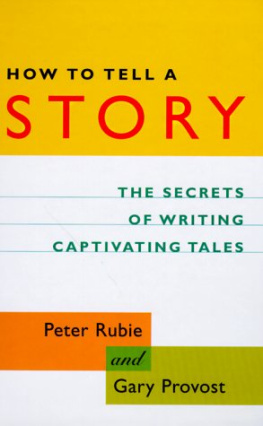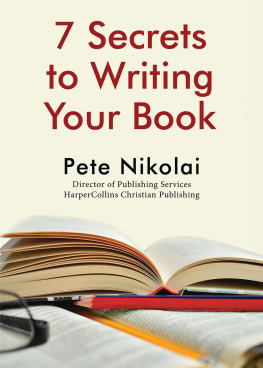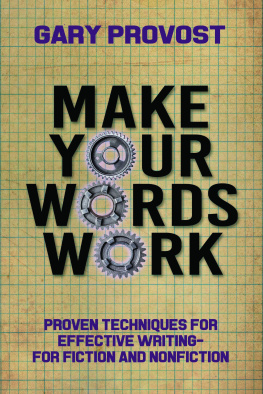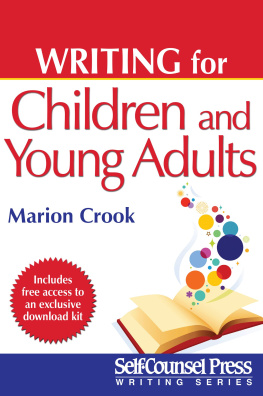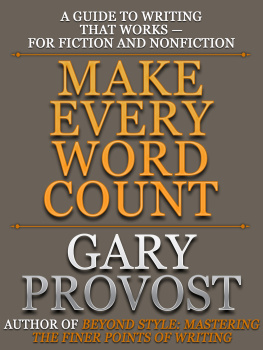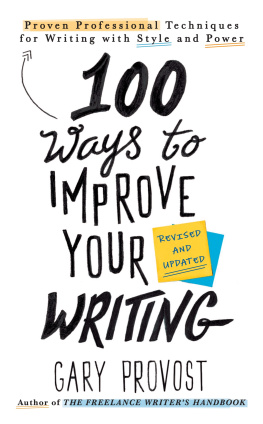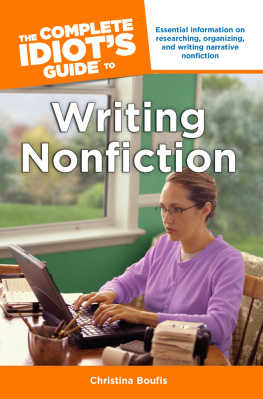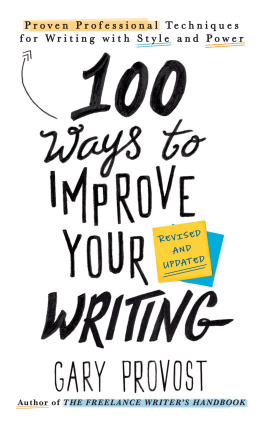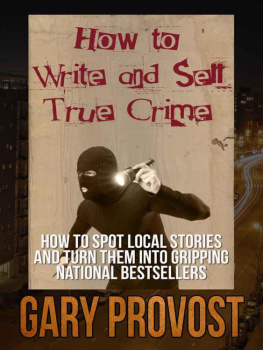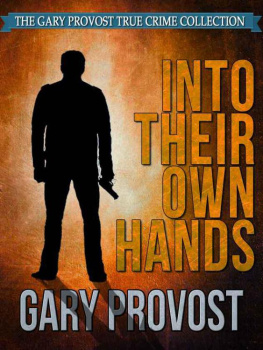TABLE OF CONTENTS
Foreword
Introduction
ONE IDEAS
TWO UNDERSTANDING GENRES
THREE HOOKS
FOUR PLOTTING
FIVE CHARACTERS
SIX GOALS
SEVEN WRITING IN SCENES
EIGHT SYSTEMS AND THE STATUS QUO
NINE CONFLICT
TEN THEME AND SUBPLOT
ELEVEN PACE
TWELVE STRUCTURE AND REWRITING
THIRTEEN FOURTEEN STEPS TO WRITING YOUR STORY
APPENDIX WRITING A BOOK PROPOSAL
FOREWORD
Gary Provost, one of the great teachers of creative writing in the United States, was in the process of turning his notes and lectures on story sense into a book when he died unexpectedly at the age of fifty. Knowing that he and I were not only friends but shared similar philosophies and ideas about teaching writing, his wife, Gail, and agent, Jeff Herman, asked me to write what is, alas, Gary's last book.
As a result, How to Tell a Story, inevitably, is not all in Gary's voice, nor does it contain ideas that are exclusively his. Instead, it is a synthesis of our ideas and is in part the product of many conversations we shared about writing fiction.
Gary was a writer of deceptively simple and crystalline prose and a gifted, empathic teacher with an understanding not only of the process of writing, but of the psychology of the novice writer. His death has left us all the poorer. However, we have his books and his tapes, and we should be thankful that at least this shadow of his excellence can still be shared both by those of us who knew him and those who did not who may still benefit from his legacy.
INTRODUCTION
What is it about some books that makes them compelling un-put-downable?
You know the ones I mean: that novel you decided you'd start just before going to sleep and ended up finishing at 6:00 the next morning just when you had to get up for work.
A friend told me (rather irately) of the first night of a much needed vacation with her husband in a French hotel. He wanted to read the new book by a best-selling author so badly that, rather than keep her awake with the reading light on, he spent all night with the book in the bathroom.
What we wouldn't give as writers to be able to have that hold over our readers.
So why is it that one person can tell you about his flight from an erupting volcano and bore you to death, while someone else can tell you why she had to do the same laundry three times last Thursday and have you hanging on every word? How is it that two people can tell the same joke and one of them has you rolling in the aisles while the other makes you squirm in your seat? The answer is the storyteller's grasp of dramatic structure and its role in unleashing the story's emotional power.
Almost every time my friend Gary Provost and I got together and talked about teaching writing, the conversation would eventually get around to whether it was possible to teach students this sense of dramatic structure, or "story sense."
We would discuss why it was that students can write well and yet what they write is boring. It gradually became apparent to us that understanding how language works and putting words on the page is not enough.
There is a second equally important element to the writer's craft that is rarely talked about and rarely written about: an awareness of how to structure material in the most effective way to put across the narrative, that has little to do with the
ability to use words well. A writer can be way ahead in ability in one skill and way behind in the other.
The reason that I, and 95 percent of all the other people in the industry, stay in publishing when there are better paying jobs elsewhere is that publishing is a compulsive and obsessive career with which to become involved. In short, we do what we do because we love it passionately and because the vast majority of our colleagues, be they editors, agents, or published writers, are brilliant, witty, interesting people whose company is fun.
But our love affair is not specifically with books; that is just the outer form. It is with what publishing is, at its heart: a marketplace for ideas.
I still get a shiver when I stop to consider that I make my living in a marketplace where the best ideas, especially those with the most emotional impact, are powerful and compelling enough that they are eagerly bought and sold. It is a heady thought. We live in a society where, despite its ills and negative elements, we still have enough regard for the product of our best thinkers that we consider their ideas commodities that have definable monetary as well as intellectual value.
This is why a good idea, whether at the heart of a piece of fiction or nonfiction, can sell when it's not that well written; and material that is wonderfully written will not always sell, because at its heart the idea contained within it is overly familiar or mundane, with little emotional impact.
In other words, authors whose books sell have a better developed story sense than their unsuccessful competitors. How do you, the novice writer, improve your chances of getting published? The answer is simple: Make sure your idea is told properlythat is, structured to be the most effective presentation of that idea, at its most emotionally gripping.
DEFINING STORY SENSE
Story sense is about structure. And the key to effective structure in fiction and narrative nonfiction can be reduced to the writer's ability to create strong, potent characters.
What we mean by this, in short, arc characters who arc active not passive; characters who are not afraid of conflict; conflict that continues to rise until the narrative's end; writing that is not episodic; story development that is not afraid of playing it big; an appropriate and effective sense of mystery; and opposition to the hero that is formidable enough that it defines and reshapes the hero for the better by story's end without being insurmountable.
Fixing structural problems is what editors and agents do most when fine-tuning the work of the authors with whom they collaborate. So what is it they know that many writers don't?
Soon after I signed the contract to write this book, I was cornered at a party by a successful writer friend with an unflinching laserlike perception, who asked me: "So how is this book going to be different from the ones you and Gary have written before?" (And implicitly, other books about writing that are already on the shelves.)
While I knew the answer, there I was, drink in hand, suddenly grasping for words to form a succinct answer. Kathy's question haunted me for weeks. All nonfiction books should pose a question, and provide an answer before you start writing them.
What is more important than any "rules" or "dos and don'ts" about writing, what all writers need to keep as keen as a knife blade, is a highly developed sense of dramatic structurein other words, story sense. The important problems writers must solve are not just what the story is, but how it should be most effectively told.
Without the ability to understand the difference, you can write words brilliantly and still not ever get published.
A quick example: The movie The Fugitive is, at its heart, a familiar story with just enough of a modern twist to make it interesting: Executives of a large pharmaceutical company fake data on an ineffective new pill and try to get rid of the one man who can blow the whistle on their fraud, potentially costing them billions of dollars in profits.
The way the story is told, however, is brilliant; and because more and more of our emotional capital becomes invested in the two main characters, played by Harrison Ford and Tommy Lee Jones, the story grips us with a mounting emotional power as it reaches its climax.
COMPELLING WRITING
Story sense is about honing your instinct for what is both dramatically appealing and dramatically successful. This is something of a mouthful, I know, but it boils down to this: Compelling writing means involving the reader completely in your narrative. That means finding the best way to tell your story, be it fiction or narrative nonfiction; you must learn how to discover and unleash the emotional power of your narrative.
Next page
